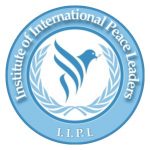- Rainwater Harvesting Systems: These systems can involve simple rain barrels or large-scale cisterns that collect and store rainwater for later use. This can reduce the amount of water taken from rivers and aquifers, thereby reducing the amount of water that needs to be treated.
- Wastewater Treatment Plants: These plants can purify wastewater to a level that makes it safe for reuse. This can reduce the amount of water that needs to be taken from rivers and aquifers and can also reduce the amount of pollution that is released into the environment.
- Desalination Plants: These plants can turn saltwater into freshwater, providing a source of clean water in areas that are suffering from water scarcity. This can also reduce the amount of water that needs to be taken from rivers and aquifers.
- Managed Aquifer Recharge: This involves artificially recharging aquifers by injecting water into the ground. This can help to prevent over-extraction of water from aquifers and can also help to replenish aquifers during times of drought.
- Watershed Management: This involves managing the land and water resources in a watershed in a sustainable way, with the goal of protecting water quality and reducing the risk of flooding. This can involve practices such as planting trees, restoring wetlands, and reducing erosion.
- Green Infrastructure: This involves using natural systems to manage water, such as green roofs, rain gardens, and permeable pavement. These systems can reduce the amount of runoff that enters the sewer system and can also help to reduce the risk of flooding.
- Smart Irrigation Systems: These systems use sensors and computers to monitor soil moisture levels and to adjust the amount of water that is applied to crops. This can help to reduce water waste and to improve water-use efficiency.
Institute of International Peace Leaders
